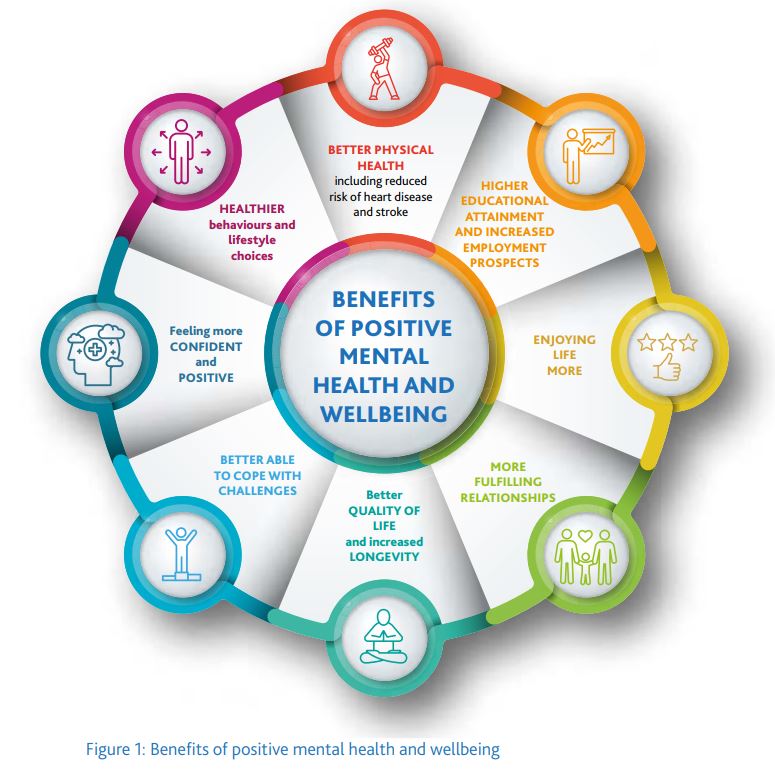Good mental health sets the foundation for our overall sense of wellbeing; it is the lens through which we experience our lives and underpins our perceptions and our behaviours. Mental health can be a positive resource and is not just the absence of mental ill-health. As the HSE’s Mental Health Promotion Plan states, “There is no health without mental health.”

The key questions to answer when addressing mental health in the workplace are:
- How can we promote a better understanding of the importance of Mental Health?
- What organisational changes can be made to address job-related stress at the source?
- How can we increase personal resources to help employees manage their stress?
A supportive workplace environment is crucial for the mental health of your employees. Some of their stress could be rooted in their job.
It’s important to remember that the workplace plays an integral part in shaping an employee’s mental health. The workplace environment can be one that promotes and protects positive mental health leading to, for example, healthy relationships and higher self-esteem.
Conversely, however, the workplace environment has the power to contribute to the development of mental health difficulties. For this reason, it is important to intentionally shape your workplace culture to support and protect the mental health of your employees.
From a workplace perspective, there is of course a legal duty to protect the health of your employees and to abide by Employment Equality Acts. Organisations are required by legislation to ensure that all staff are treated equally and without discrimination, and this is an important baseline for mental health.
Being treated unfairly will be a significant driver of stress and compromised mental health. Building on this, there are many additional benefits to promoting and protecting the mental health of your employees as part of your wellbeing programme, including:
- Thriving workers
- Increase in productivity
- Increase in engagement and job satisfaction
- Increase in attraction of top talent
- Increase in reputation in the public for being a responsible employer
- Decrease in absenteeism
- Decrease in turnover and recruitment and training costs
- Decrease in work-related injuries and illnesses
- Decrease in workers’ compensation claims
The World Health Organization states that “globally, an estimated 12 billion working days are lost every year due to depression and anxiety at a cost of US$1 trillion per year in lost productivity.” Furthermore, a survey by the Irish Business and Employers Confederation estimates “11 million days are lost through absenteeism every year at a cost of €1.5bn or €818 per employee.”
Here are some quick resources to get you started:
While these resources are helpful to get you started, it’s very important to carefully plan your workplace wellbeing activities. Research shows that all activities that target the individual employee, should be coupled with activities at the level of the organisation. In other words, you should always take measures to create a supportive organisational environment alongside lifestyle-focussed supports for your employees. We’ve included detailed advice on how best to plan your activities at both these levels.
Organisation-level Activities
The “bedrock” of the CIPD Well-being Pyramid is culture, leadership and people management. These are the best ways to ensure you’re creating a solid foundation to your workplace well-being efforts:
Individual-level Activities
Your wellbeing initiatives at the individual level will likely focus on raising awareness, building skills to manage this wellbeing area, and/or might be preventative in nature.
Other Mental Health Resources
In this section you can find additional resources to help you with your mental health programmes
